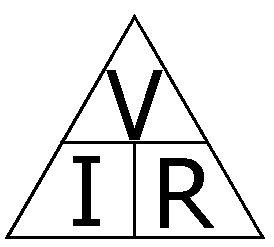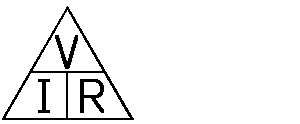Electricity is in everything, but you only notice it when it moves. You may have noticed a plastic comb can attract your hair after combing it. Electrons have been "rubbed off" and are being attracted back to it. This loss of electrons produces a positive charge and these exert an electrical force.
The electrical force is called voltage (abbreviated V) and is measured in Volts, also abbreviated V. It can be measured using an instrument called a "voltmeter". The voltage is the motive force that drives the electricity through the circuit. The force can be strong or weak, depending on the source. A single cell battery produces a relatively weak force of only 1.5V which is why small single cell torches are not very powerful. A larger voltage, such as one would get by linking many such cells together produces a much greater force. This is why so many batteries are needed for more powerful torches and things like radio controlled model cars.
The UK mains supply produces a very much higher voltage (230V) which is so powerful it can turn a 25Kg washing machine drum, or kill someone who accidentally comes into contact with it.
The flow of electricity in a wire is called current, abbreviated I, and measured in Amps, abbreviated A. It is measured using an "Ammeter".
When dealing with large currents we usually use a large diameter wire, so we can often judge the current demands of an appliance by looking at the size of the supply wire. Since larger diameter wires are more expensive to produce, manufacturers only use as large a wire diameter as is needed by the appliance. So the thin supply wire of a mains powered alarm clock is because it needs only a small current, while the very thick wire attached to an electric kettle indicates the much higher current it requires.
Electricity has to do some work to get through the wires, and to get through the load. The amount of work that must be done by the electric current to get through is called resistance. Resistance is, as the name implies, a measure of how much something resists the flow of electricity through it. A high resistance does not allow current to flow easily, a low resistance allows current to flow very easily. Think of resistance as a force trying to stop the current flow.
Another way of expressing this idea is to say that something with a low resistance is a good conductor, something with high resistance is a poor conductor. If the resistance is so high that it is almost impossible for electricity to pass through it, then we would call it an insulator. Notice that we say that it is "almost impossible" for electricity to pass through an insulator; Given sufficient voltage (a big enough electrical driving force) current will flow through most insulators, or just flow through the air around them - something to remember when dealing with high voltage valve equipment.
Resistance, abbreviated R, is measured in OHMS, abbreviated ![]() (The Greek letter "omega"). It can be measured using an
"Ohm-meter".
(The Greek letter "omega"). It can be measured using an
"Ohm-meter".
 Ohm's
law states the following "The current flowing in a circuit is directly
proportional to the voltage applied, and inversely proportional to the circuit's
resistance"
Ohm's
law states the following "The current flowing in a circuit is directly
proportional to the voltage applied, and inversely proportional to the circuit's
resistance"
It sound's complicated doesn't it? Well it isn't, it's really just common sense. If voltage (V) is the force driving the electrical current (I), then common sense tells us that the bigger the force is, the bigger (faster) the electric current will be. That's what the first half of Ohm's law says, on to the second part........
We mentioned earlier that it is sometimes useful to think of resistance like an opposing force, trying to stop the current from flowing. The bigger this opposing force is, the less the current will flow; That's the second part of Ohm's law.
Ohm's law relates voltage (V), current (I) and resistance (R). In fact the mathematical relationship between them is very simple;
Voltage = Current x Resistance or V = I x R. Often in maths the "x" for multiply is omitted so we get
V = I R

1. A 5v battery is connected to a bulb with a resistance of 20![]() How much current is flowing.
How much current is flowing.
We want to calculate the current (I), so we cover I on the triangle showing
that
I = V / R = 5V / 20![]() = 0.25A
= 0.25A
2. A battery is connected to a 300![]() bulb. The current is measured as 0.02A. What is the voltage of the battery?
bulb. The current is measured as 0.02A. What is the voltage of the battery?
We want to calculate voltage (V), so we cover V in the triangle showing that
V = I R = 300![]() x 0.02A = 6V
x 0.02A = 6V
3. A 6V battery is connected to a motor. If the current flow is measured as 0.15A, what is the resistance of the motor?
We want to calculate resistance (R), so we cover R in the triangle thus,
showing that
R = V / I = 6V / 0.15A = 40![]()
That was quite straight-forward wasn't it? The good news is it doesn't get any more complex than this at this level.